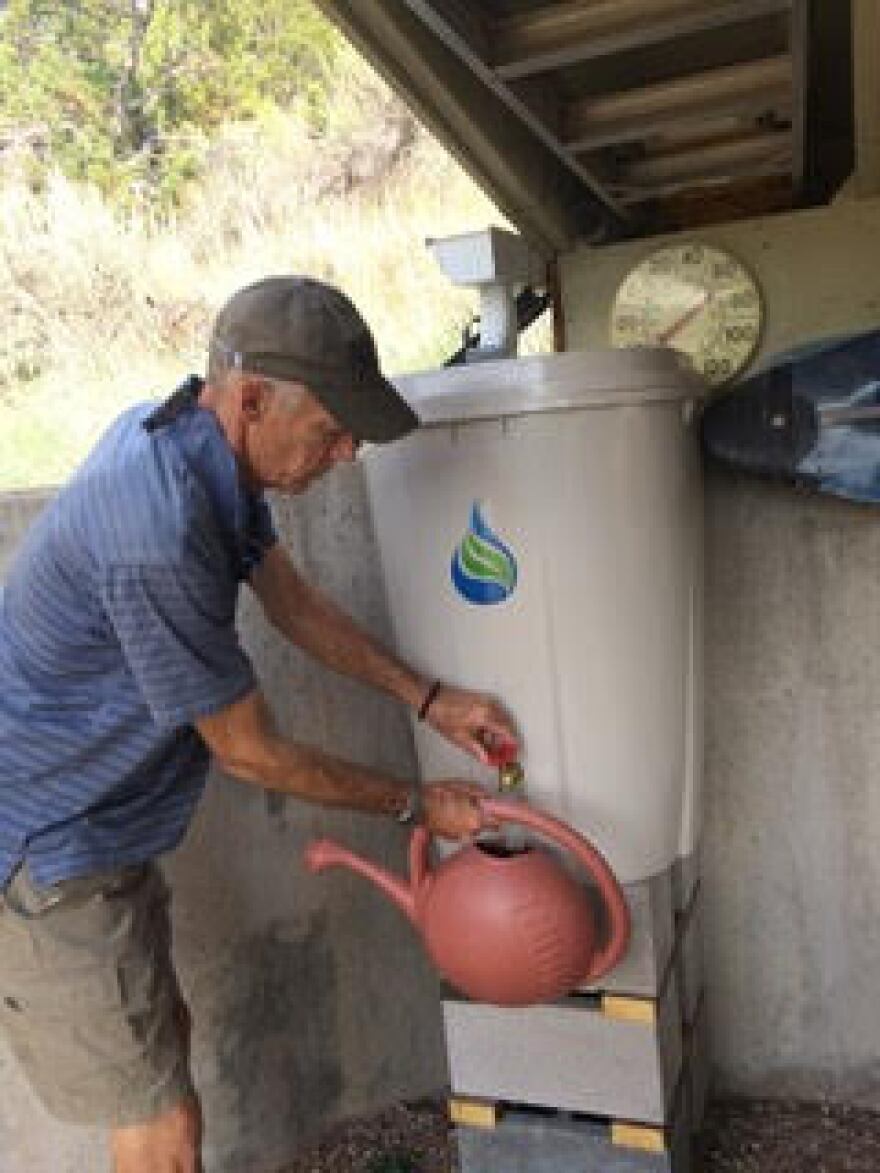A law that passed last year in Colorado allows residents to capture and use rainwater for outdoor irrigation. As Roaring Fork Valley homeowners rely on weather patterns and natural cycles for their water supply, it's teaching them how to manage a scarce resource.
Sam Cox lives in rural Emma, far from any municipal water supply. He has a well.
"Up here, it's got a lot of rust in it,” Cox said. “It's really hard. The water softener puts salt in it instead of hardness so we get really salty water."
It’s not great for drinking — or for keeping plants alive. So a few years ago, he set up a metal garbage can under the downspout on his carport to capture rainwater to use on a small garden. He checked water levels on a recent afternoon.
“We live in a desert here. All of our vegetation is sage and pinyon and juniper, and we’re south-facing,” Cox said. “For us it was a necessity if we wanted to have flowers.”
Until last year, that system was actually illegal. Colorado water law, in this way, is actually pretty simple. Whoever is first in line — meaning, whoever originally claimed the water through a water right — gets it first.
So, prior to 2016, rain that fell on your roof wasn’t yours to use.
But now, the state has acknowledged that rainwater falling onto a roof is a negligible amount, not enough to detract from a water right holder. The law now allows homeowners to jump the line and capture up to 110 gallons of rainwater to use on their landscapes.
“It just makes sense to use rain to water your outdoor features,” said Christina Medved, an educator with the Roaring Fork Conservancy.
In the arid west, rain barrels can help conserve both water and energy.
“It’s an opportunity to conserve municipal water, which is chlorinated, and it’s taken energy to create that municipal water,” Medved explained.
The idea of a rain barrel is pretty simple. When it storms, homeowners attach a barrel to their gutters. The rain fills up the barrel, and the homeowner uses it on the lawn or garden a few days later, when things start drying up.

April Long, stormwater manager for the City of Aspen, said the benefits of rain barrels go beyond energy savings. They can also help control and manage stormwater in the most natural way possible.
“Which is by introducing it into the ground it should have gone into originally," Long said.
In a typical storm, rain that falls onto roofs will travel through gutters to the streets, into a drain that runs to the river. That means all the dirt and grime from roofs, gutters and streets is washed right into the river, as well. This is bad news for the Roaring Fork, which has been on the state’s list of impaired rivers for 5 years, in part because of pollution from stormwater.
But a rain barrel breaks that chain.
"You're naturally filtering out any pollutants,” Long said. “And you're recharging the groundwater aquifer under your home, so that water is soaking into the ground as it should be, rather than going into the city’s stormwater system.”
This leads to a cleaner river. In addition, using rain barrels can also help homeowners see the big picture in dry western states. As individuals take care of their own supply and demand, they have to think like a water manager.
"It'll make you a little more of a smart user, and give an insight into what we do at the City of Aspen as water managers when we’re thinking about the supply and demand for an entire watershed or for the city’s and community’s needs,” Long said.
It also means that homeowners have to figure out the best use for a limited resource in times of drought. For Sam Cox in Emma, this past June was particularly tricky.
“When we have a drought for 40 days or very little rain for 40 days, then what do we do? Go buy bottled water for our plants?” Cox said. “So, a couple plants just died.”
That’s the reality of working with a scarce resource — learning to make difficult choices and cope with the consequences.



